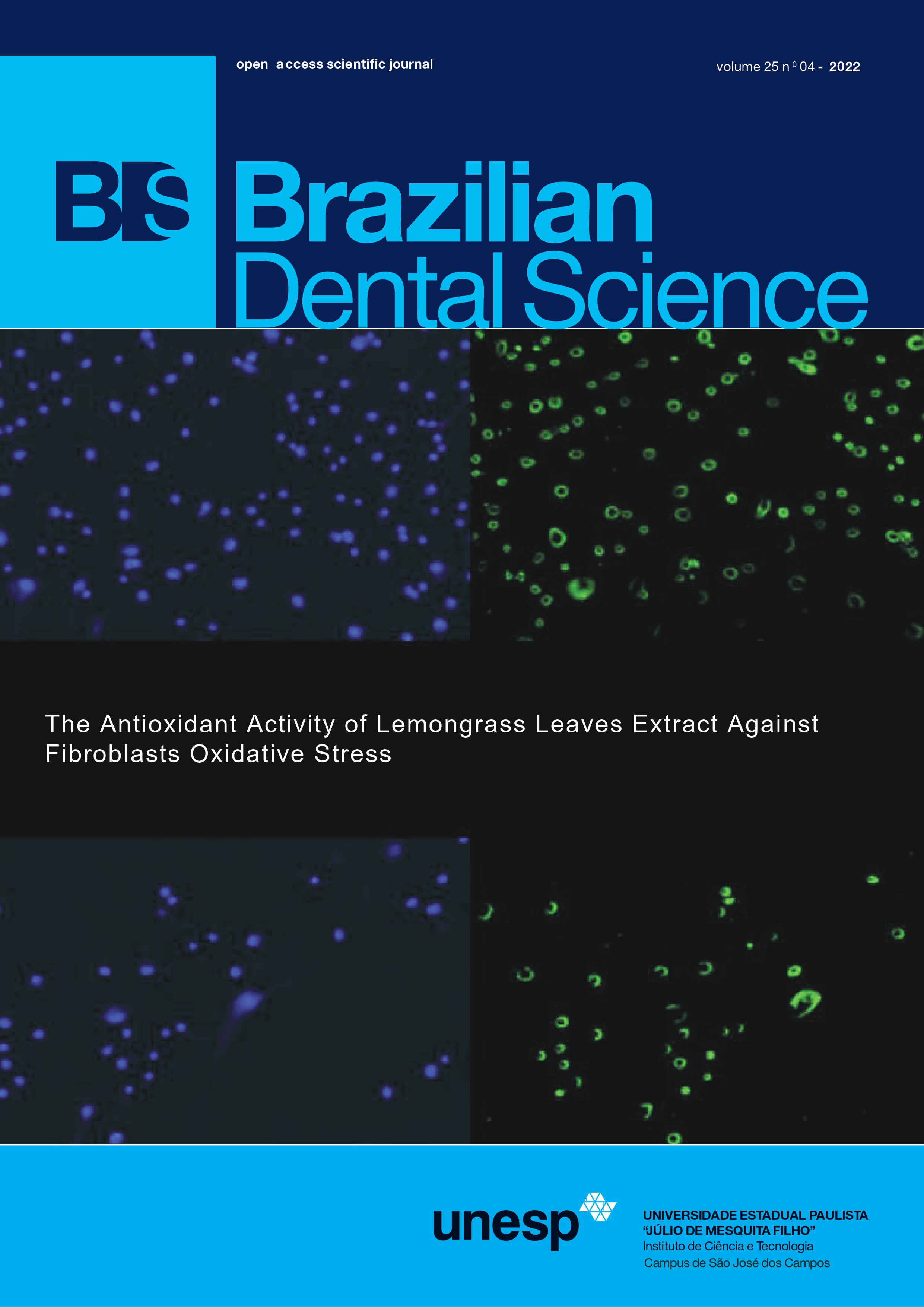Assessment of apical pressures at different automated irrigant flow rates: an ex vivo study based on computational fluid dynamic analysis
DOI:
https://doi.org/10.4322/bds.2022.e3463Abstract
Objective: The current study aimed at assessing the induced apical pressure at various simulated irrigant
flow rates. Materials and Methods: Forty eight freshly extracted single-rooted premolars were decoronated
and prepared to size 30 0.04 taper using HY-Flex CM rotary file system and were scanned using cone-beam
computed tomography (CBCT). The scanned images were reconstructed to three-dimensional Computer-aided
design models (CAD) and the 3D needle was also reconstructed. Finally, simulations were done by placing the
30 gauge open-ended needle 3 mm short of the working length. Results: There was a statistically significant
difference (p<0.05) among the different groups compared. 1 ml/min flow rate induced the least apical pressures
(p<0.05) as compared to the other types. Conclusion: 1 ml/min flow rates induced the least apical pressures
when open-ended needles are used for irrigation.
KEYWORDS
Apical pressure; Computational fluid dynamic analysis; Flow rate; Irrigation; Root canal.
Downloads
Downloads
Published
How to Cite
Issue
Section
License
Brazilian Dental Science uses the Creative Commons (CC-BY 4.0) license, thus preserving the integrity of articles in an open access environment. The journal allows the author to retain publishing rights without restrictions.
=================




























